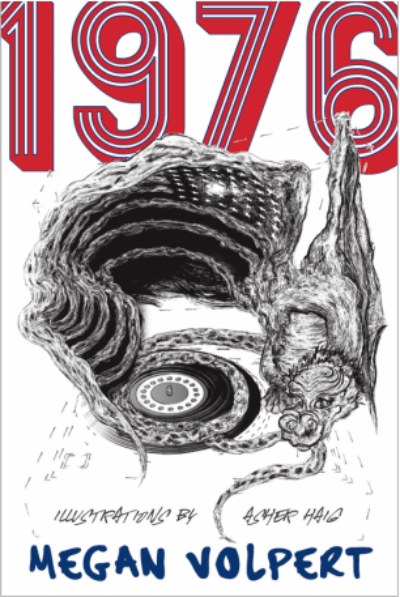Megan Volpert’s new novel has old school dyke sex appeal.
The conceit of Megan Volpert's new book, 1976, demonstrates ambition, even bravado. A book length meditation on the year of the bicentennial of the United States, 1976 is an inventive romp in twelve chapters, one for each month (though July gets two but who's counting) with a prologue and epitaph. The conceit of course is that Volpert was not born until 1981; she conjures the magical bicentennial year through research and connection to how the events of '76 ultimately shaped her life.
In each chapter, Volpert mines the history of the year for cultural touchstones then meditates on culture, politics, and music in essays that kaleidoscope with psychedelic colors and details. 1976 frolics through cultural touchstones of the past forty years: the Ramones, Richard Linklater's Dazed and Confused, Joan Jett, Ron Kovic, Gerald Ford, George Harrison, Debbie Harry, and Jimmy Carter. Volpert writes with confidence and verve; the essays twist and turn, sing and shout.
The expanse of Volpert's interests and the implicit assertion that she has the authority and perspective to interpret these months for a new generation suggests the breadth of her ambitions. In short, 1976 swaggers. I have not encountered such bravado in many contemporary books. It is exciting, unnerving, sexy.
1976 is explicitly in the tradition of Hunter S. Thompson, Jack Kerouac, and Tom Wolfe. Volpert is a dyke in the macho genres of sex, drugs, and rock and roll. So was Eileen Myles and, in different ways, Sarah Schulman. Reading 1976, I imagine young dykes might find it as electrifying as I found Myles's Chelsea Girls and Schulman's After Delores. For many in mainstream America, Eileen Myles emerged from nowhere to become a phenom in 2015 and 2016, dovetailing with her portrayal on Jill Soloway's Transparent by Cherry Jones. For dykes reading for the past thirty years, however, Myles has not emerged like fireworks at dusk, rather, as a slow burning candle providing light each night for years. Similarly, Schulman's consistent production of challenging and innovative novels and cultural analysis offers a beacon of light for lesbian literary culture.
In a similar way, Volpert has been with us for some time. 1976 is her eighth book; two of her previous books were finalists for a Lambda Literary Award. She is on pace to produce as much work as Myles and Schulman. 1976 indicates that her work may be as culturally significant. Is Volpert a young Myles? A young Schulman? Look at the swagger.
